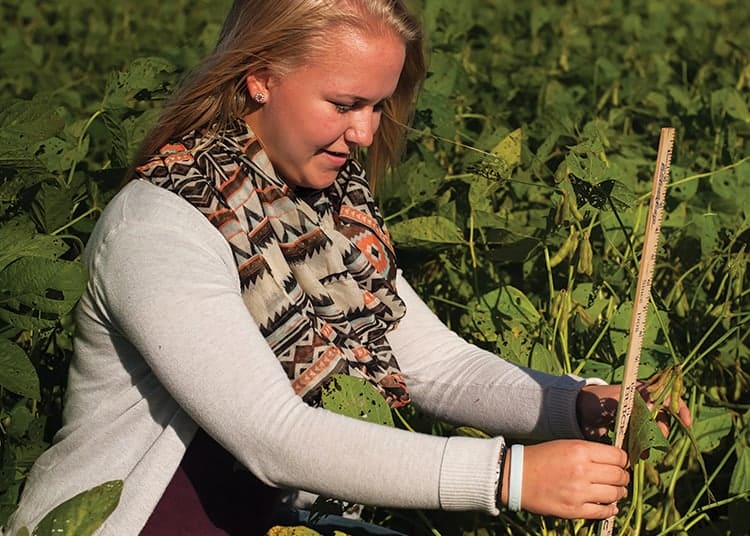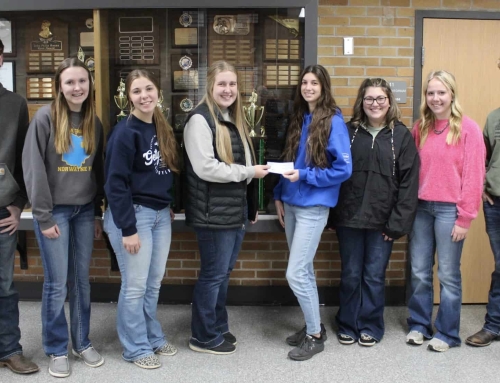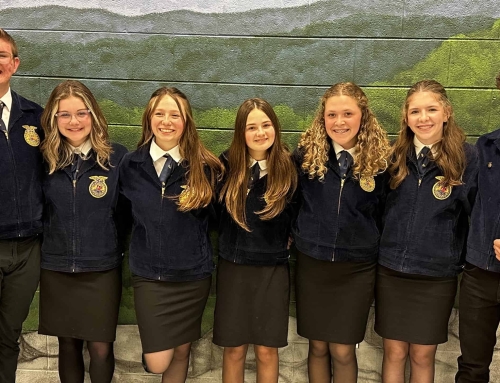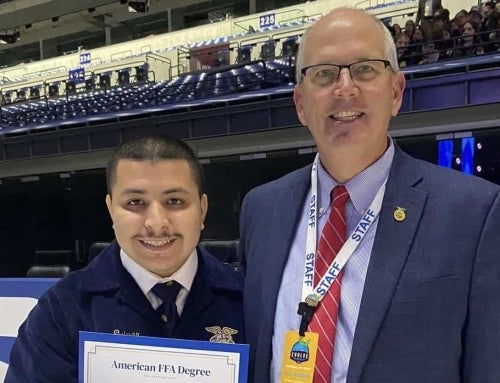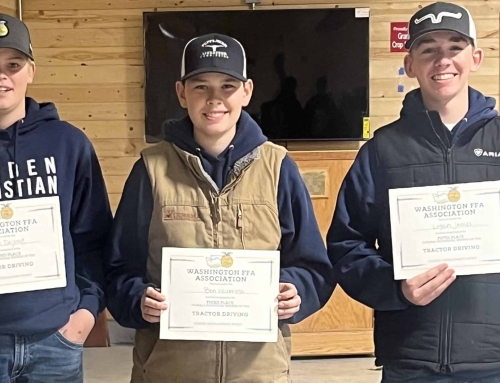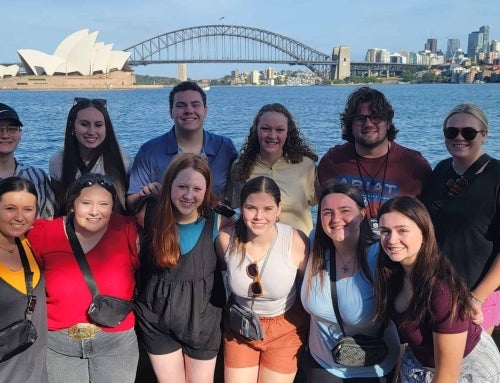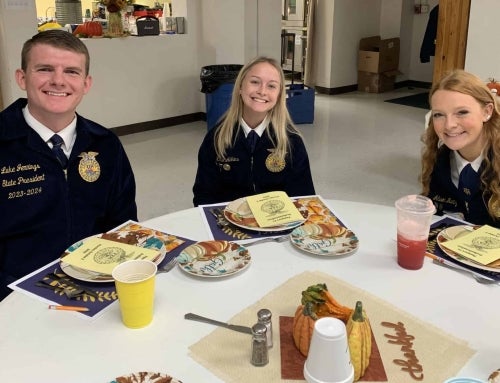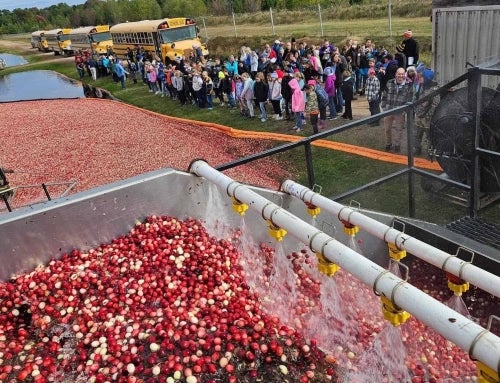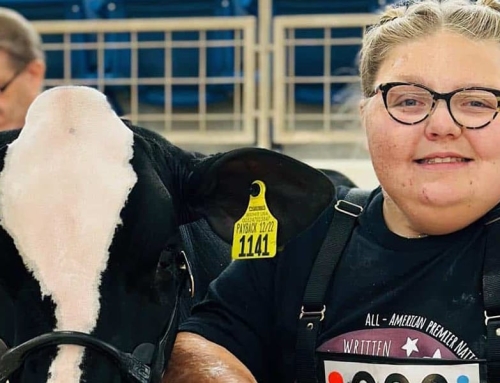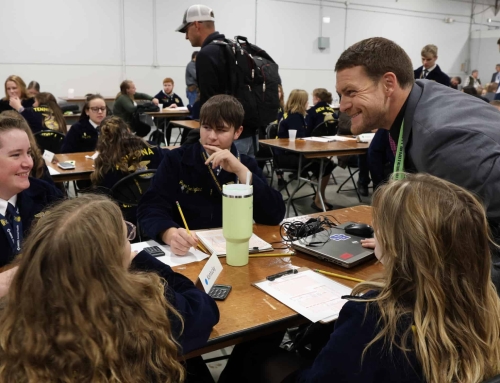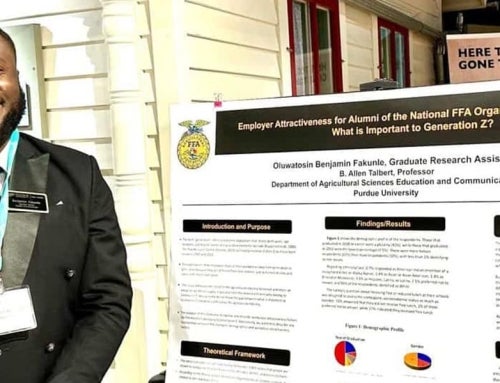Soybeans may not be a hot topic of discussion among many high school students, but for one FFA chapter in Illinois, they are creating quite a buzz. Students in the agriculture program at Rantoul High School have been planting soybeans in test plots for more than 20 years, but their soybeans garnered national attention during the 2015-16 school year.
The Rantoul FFA Chapter submitted soybean samples from their test plots to a national program called High Yield PLUS Quality (HY+Q), which is funded by the Soybean Checkoff and sponsored by the Illinois Soybean Association. The program’s goal is to make sure U.S. soy is the highest quality, highest value and most competitive in the world marketplace.
“We invite farmers and agribusinesses across the United States to submit soybean samples, and we did not expect to receive student samples. Rantoul High School agriculture teacher Roman Fox sent us samples from his students, and that was a pleasant surprise for us,” says John Osthus, HY+Q Program Lead. “We were delighted to have students to work with. The educational aspect of what they did is so important because it’s a good opportunity to connect the farm with the city, and that’s a huge challenge in agriculture these days.”
 The students’ soybean samples were compared with other samples submitted from farms in their area and tested for protein (amino acids) and oil content. Then the HY+Q Program sent the students back a report and even visited Rantoul High School in April 2016 to give a presentation and connect with students on a deeper level.
The students’ soybean samples were compared with other samples submitted from farms in their area and tested for protein (amino acids) and oil content. Then the HY+Q Program sent the students back a report and even visited Rantoul High School in April 2016 to give a presentation and connect with students on a deeper level.
“We wanted to build awareness with students about how soybean yield and quality helps local economies and connects them to the world,” Osthus says. “A lot of people drive by soybean fields and to them, they’re just fields. They don’t realize those soybeans are feeding people across the world or that there has been a huge increase in soybean demand globally.”
Soybeans contain both protein and oil. Soybean oil is used in many food products including margarine, salad dressings and cooking oils. It is also used in industrial products such as plastics and biodiesel fuel. Thanks to the protein and energy in soybean meal, it packs a powerful nutritional punch in animal feeds. Soybeans are also used in lots of edible products. Soy foods popular in Southeast Asia, for example, include miso, bean curd, tempeh, soymilk and soy sauce.
“Through this project, our students have learned more about the importance of soybean content,” says Fox, who is also the FFA advisor at Rantoul High School. “They learned from researchers and marketers from around the world the importance of oil and protein content. Any time we can work with industry researchers, our students can gain valuable exposure and experience in the science and research sector.”
The soybean project was especially eye-opening to students who live in the city as opposed to on farms. “Our corn and soybean plots are very important to the agriculture experience for our students. Most of them are not from a traditional farm family,” Fox says. “Their exposure and opportunities in production agriculture are limited. The plot allows our students to learn agronomic principles in a hands-on, real-world setting.”
Osthus agrees.
“Sometimes we get questions from students like whether soybean milk comes from cows,” he says. “How food is produced is interesting people more and more. Students at Rantoul High School seemed very interested and had a number of questions for us. We showed them slides describing the soy market in Southeast Asia to describe why U.S. soybeans matter globally.”
The chapter’s involvement in the national HY+Q Program inspired organizers to encourage more schools to submit soybean samples beginning in the fall of 2017.
“We’re very excited to serve FFA and partner with agriculture students,” Osthus says. “We want to reach out and invite even more FFA chapters to participate in the program. If they have soybean plots they can grow them, or they can gather samples from local farm families.”
– Jessica Mozo

